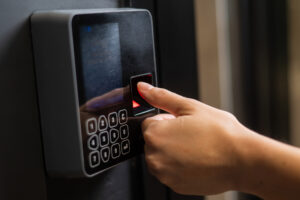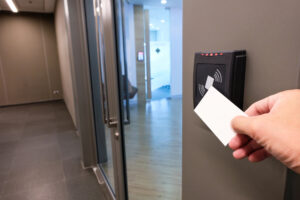Security breaches cost businesses an average of $4.45 million per incident. Yet many organizations still struggle with one fundamental question: who should have access to what, when, and how?
Access control forms the backbone of any robust security strategy. It determines which users can access specific resources, systems, or areas within your organization. Without proper access control measures, you’re essentially leaving your front door wide open to potential threats.
This comprehensive guide will walk you through the essential access control methods, implementation best practices, and emerging technologies that can transform your security posture. Whether you’re securing physical premises or digital assets, understanding these principles will help you build a fortress around your most valuable resources.
Understanding Access Control: The Foundation of Security
Access control is a security technique that regulates who or what can view or use resources in a computing environment or physical space. Think of it as your organization’s security gatekeeper—it verifies identities, checks permissions, and grants or denies access based on predetermined policies.
The core principle revolves around three fundamental elements:
Authentication verifies the identity of a user, device, or system attempting to access resources. This could involve passwords, biometric scans, or security tokens.
Authorization determines what an authenticated user can do once they’ve gained access. Just because someone can enter the building doesn’t mean they can access the server room.
Accounting (or auditing) tracks and logs access attempts, successful logins, and user activities. This creates an audit trail that’s invaluable for compliance and incident response.
Why does this matter for your business? Data breaches often result from inadequate access controls. When employees have excessive privileges or former staff retain system access, you create unnecessary risk. Effective access control minimizes these vulnerabilities while maintaining operational efficiency.
Types of Access Control Methods
Discretionary Access Control (DAC)
DAC puts access decisions in the hands of resource owners. The person who creates or owns a file, folder, or system resource can decide who else can access it and what they can do with it.
Common examples include:
- File permissions on Windows or Unix systems
- Shared folder access on network drives
- Document sharing settings in cloud platforms
The main advantage of DAC is its flexibility. Users can quickly share resources without involving IT administrators. However, this flexibility can become a weakness. Users might inadvertently grant excessive permissions or forget to revoke access when it’s no longer needed.
DAC works best in smaller organizations where trust levels are high and security requirements are moderate. It’s less suitable for environments handling sensitive data or requiring strict compliance.
Mandatory Access Control (MAC)
MAC takes a more rigid approach. A central authority—typically the system administrator—defines all access permissions based on security classifications. Users cannot modify these permissions, regardless of whether they own the resource.
Key characteristics include:
- Centralized policy management
- Security labels are assigned to subjects and objects
- Strict enforcement of access rules
- No user discretion in granting access
Government agencies and military organizations commonly use MAC systems. The security benefits are substantial—administrators maintain complete control over who can access what. However, MAC systems can be inflexible and may hinder productivity if implemented too restrictively.
Role-Based Access Control (RBAC)
RBAC strikes a balance between security and usability by assigning permissions to roles rather than individual users. Users receive access based on their job functions within the organization.
For example:
- Marketing staff might have access to campaign management tools and customer databases
- Finance team members could access accounting software and financial reports
- IT administrators might have elevated privileges across multiple systems
RBAC simplifies permission management significantly. When someone changes roles, you modify their role assignment rather than individual permissions. This reduces administrative overhead and minimizes the risk of permission creep.
Most modern organizations prefer RBAC because it aligns naturally with business structures and processes. It’s scalable, manageable, and provides clear audit trails.
Best Practices for Implementing Access Control 
Apply the Principle of Least Privilege
Grant users the minimum access necessary to perform their job functions. This fundamental principle reduces your attack surface and limits potential damage from compromised accounts.
Start by identifying what each role needs to access. Conduct regular access reviews to ensure permissions remain appropriate. Remove unnecessary access promptly—studies show that 68% of organizations have users with access to systems they don’t need for their jobs.
Implement Multi-Factor Authentication (MFA)
Passwords alone are insufficient protection. MFA adds additional verification steps, making it exponentially harder for unauthorized users to gain access.
Consider these MFA options:
- SMS or email codes
- Authenticator apps
- Hardware tokens
- Biometric verification
Deploy MFA for all privileged accounts and sensitive systems. The slight inconvenience is vastly outweighed by the security benefits.
Regular Access Reviews and Updates
Access requirements change as employees switch roles, projects end, or business needs evolve. Establish a schedule for reviewing and updating access permissions.
Quarterly reviews work well for most organizations. Focus on:
- Removing access for departed employees
- Updating permissions for role changes
- Identifying and removing unused accounts
- Validating that current access aligns with job requirements
Document Your Access Control Policies
Clear documentation ensures consistent implementation and helps with compliance requirements. Your policies should cover:
- Who can request access to different systems
- Approval workflows for access requests
- Regular review procedures
- Incident response procedures for access violations
Make these policies accessible to all relevant staff and update them regularly as your security posture evolves.
Access Control in Different Environments 
Physical Access Control
Physical security often gets overlooked, but it’s equally important as digital protection. Unauthorized physical access can bypass even the most sophisticated cybersecurity measures.
Physical access control methods include:
- Key cards and proximity badges
- Biometric readers (fingerprint, facial recognition)
- Security guards and reception desks
- Visitor management systems
- Security cameras and monitoring
Layer these controls based on the sensitivity of different areas. Public areas might require basic badge access, while data centers need multi-factor authentication and escort requirements.
Digital Access Control
Digital environments present unique challenges due to their complexity and interconnected nature. Your digital access control strategy should address:
Network access control manages who can connect to your network and what they can do once connected. This includes VPN access, wireless network security, and network segmentation.
Application access control governs user permissions within specific software applications. This might involve single sign-on (SSO) systems, application-specific roles, and API access management.
Data access control focuses on protecting sensitive information regardless of where it’s stored or how it’s accessed. This includes database permissions, file encryption, and data loss prevention tools.
Cloud Environment Considerations
Cloud platforms introduce additional complexity to access control. You’re often managing hybrid environments where some resources are on-premises while others are in the cloud.
Key considerations include:
- Identity federation between on-premises and cloud systems
- API security and access management
- Multi-tenancy and data isolation
- Compliance requirements across jurisdictions
Cloud access security brokers (CASB) can help manage these complexities by providing centralized visibility and control across multiple cloud services.
Securing Your Assets with Effective Access Control
Access control isn’t just about keeping bad actors out—it’s about enabling your organization to operate efficiently while maintaining security. The methods and best practices outlined in this guide provide a roadmap for building robust access control systems that grow with your business.
Success requires ongoing attention and regular updates. Security threats evolve constantly, and your access control measures must evolve too. Start with the fundamentals: implement least privilege access, deploy multi-factor authentication, and establish regular review procedures.
Remember that access control is most effective when it’s part of a comprehensive security strategy. Combine technical controls with employee training, incident response procedures, and regular security assessments.
Ready to strengthen your organization’s access control? Start by conducting an access audit to identify current gaps and risks. Then prioritize improvements based on your most critical assets and highest-risk scenarios. With proper planning and implementation, you can create access control systems that protect your organization while supporting business objectives.
Don’t wait for a security incident to highlight access control weaknesses. Take action today to secure your digital and physical assets with proven access control methods and best practices.



